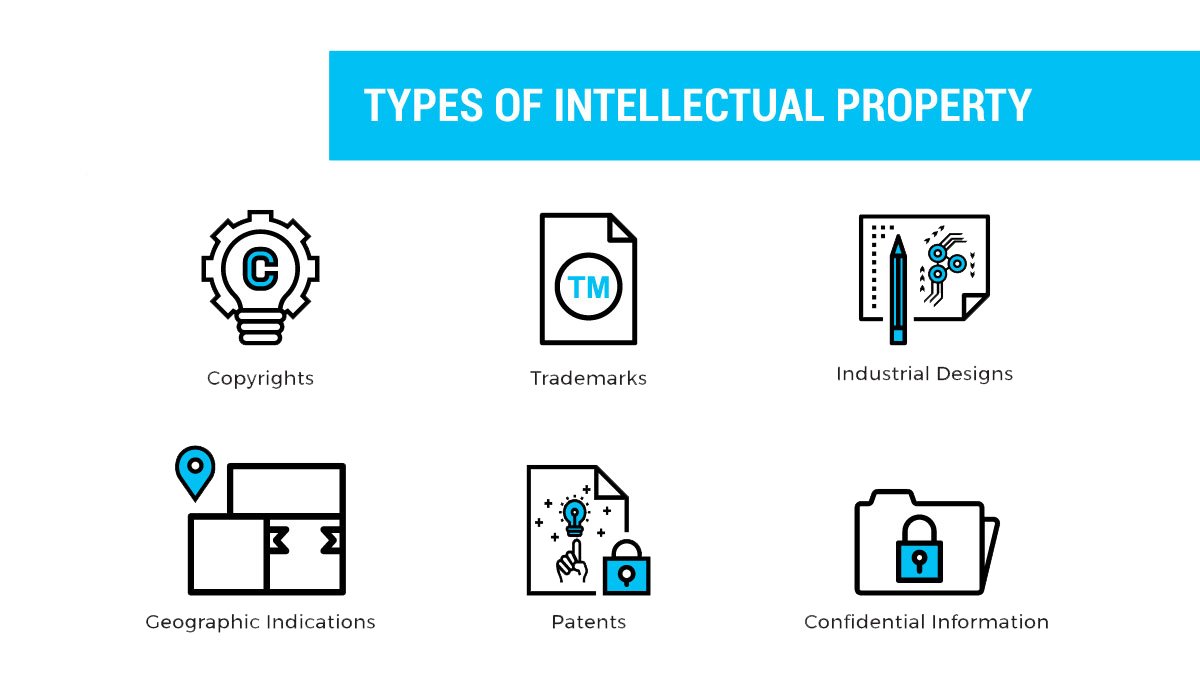Intellectual property (IP) is a critical aspect of any business as it refers to intangible creations of the mind such as inventions, designs, logos or creative works. Without protecting these assets, businesses risk losing their competitive edge and, in some cases, their entire business model. Therefore, intellectual property protection is essential for businesses seeking to protect their assets and maintain a competitive edge in their respective industries. This article provides an overview of the protection of intellectual property and different types of intellectual property rights, as well as strategies and best practices for protecting and managing these assets.
Types of intellectual property

Intellectual property includes several different types of intangible assets, each with its own legal basis for protection. These types of intellectual property include:
Patents
A patent is a legal document that grants an inventor the exclusive right to make, use, and sell an invention for a specified period of time, usually 20 years from the filing date of the application. Patents can protect a wide range of inventions, including machines, processes, and designs.
Trademarks
A trademark is a distinctive sign or symbol that identifies a product or service and distinguishes it from competitors’ goods or services. Trademarks may include words, logos, slogans, or a combination of these elements.
Copyright
Copyright is a legal right that gives the owner the exclusive right to control the reproduction, distribution, and display of an original work of authorship, such as a book, song, or work of art. Copyright may also apply to software, databases, and other digital content.
Trade secret
A trade secret is any confidential commercial information that gives a company a competitive advantage, such as a recipe, formula, or customer list. Trade secrets are not protected by law, but by confidentiality agreements between the parties involved.
Intellectual Property Protection Strategies

- Conducting a comprehensive audit of IP. Before a business can protect its intellectual property, it must first identify and inventory all of its IP assets. Conducting a due diligence IP audit can help businesses identify any gaps in their IP protection and determine the best strategies to protect their assets.
- Applying for IP protection. The most effective way to protect intellectual property is to apply for legal protection through the appropriate channels. This includes filing for patents, registering trademarks, and obtaining copyright protection.
- Trade secret protection. Although trade secrets are not legally protected, businesses can take steps to protect them through confidentiality agreements, non-disclosure agreements, and other legal agreements.
- Protecting IP Rights. Even where legal protection exists, businesses must actively protect their IP rights to prevent infringement. This includes monitoring the market for any unauthorized use of their IP assets and taking legal action where necessary.
Best Practices for Intellectual Property Management
- Employee training. Employees play a critical role in protecting intellectual property and businesses should provide training and education on a regular basis to ensure employees understand the importance of IP protection and their role in protecting these assets.
- Establish clear policies and procedures. Companies should have clear policies and procedures for managing and protecting intellectual property, including guidelines for the use and distribution of IP assets.
- Protecting Digital Assets: In today’s digital age, it’s important for businesses to protect their digital assets through encryption, password protection, and other security measures.
- Monitoring violations. Regular monitoring of the market for unauthorized use of intellectual property can help businesses identify potential infringements and take immediate legal action to protect their assets.
Conclusion
Protecting intellectual property is a critical aspect of any business as it allows companies to protect their assets and maintain a competitive edge in their respective industries. Understanding the different types of intellectual property and the legal framework for protecting them.








